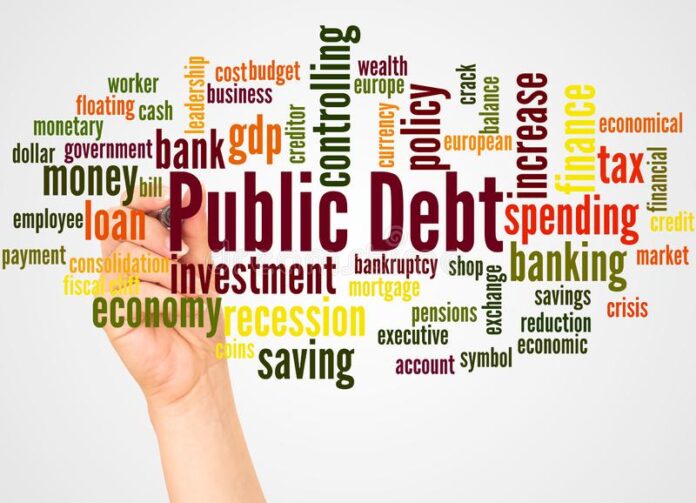AT PENPOINT
Dragging itself over the line, Pakistan just managed to avoid a default by managing a payment totaling $1 billion to two banks. That brought Pakistan’s reserves down to $4.5 billion, which was worth about three weeks of exports. It was not really a relief, for Pakistan was safe only until the next repayment was due. It might be remembered that there was similar panic, though lower in intensity, at the beginning of December, when last a payment was due.
It was worth noting that these payments are not to governments or multilateral creditors like the IMF, but to commercial banks. These payments are made to keep open Pakistan’s access to the global money markets, to these banks. The problem is now that these loans are not taken to fund development, but to finance the trade deficit and the current account deficit, also to keep up the payments falling due on previous loans.
An important factor is whether the global financial system can afford any more defaults. There is fear of the butterfly effect that defaults of relatively small sums might lead to further defaults, which would in turn cause a cataclysm similar to what the world experienced in 1929.
It could be that the default by Sri Lanka was simply a testing of the waters. It did not set off any bank failures. That is the factor that will count in any collapse. So far, global crises have been dated by the failure of global banks. So far, none has declared bankruptcy, but there is no certainty that the world has indeed recovered from the Subprime Mortgage crisis at the start of the century, when not just US banking, but real estate too, took a massive hit.
One problem that Pakistan faces is that it has no previous experience. For the last half a century, it has been used to being bailed out because of geostrategic odd jobs. The last episode was at the turn of the century, when Pakistan got some Paris Club relief and an IMF package in exchange for supporting the USA in its Afghan adventure. This was apart from bilateral US aid. At the moment, Pakistan has little to offer. The USA is tilting towards India, which it sees as its bulwark in the region against China. Can the USA demand of Pakistan that it accept an Indian solution of the Kashmir issue? That is what India will demand as an earnest of Pakistani intentions if it was to accept Indian hegemony.
That Pakistan has already done, by accepting India’s changing of the status of Indian-Held Kashmir. Next, it has to abandon the Chinese relationship. Interestingly enough, the supposed crusader against the USA, Imran Khan, did more to damage the relationship than his successor, Mian Shehbaz Sharif, who has tried to use the exchange of New Year greetings with Chinese counterpart Li Keqiang to make assurances that CPEC projects would receive the attention they deserved.
The other thing Pakistan can do is to free India of the fear of its nuclear programme. That will not be easily done, because it has not become merely a symbol of national pride, but of national existence. It is a commonly held belief that Pakistan would have had to accept Indian hegemony in 1998 when the Indian tests took place. Pakistan delayed its decision to test for a fortnight, while it gauged both Indian and US reactions. Indian Home Minister L.K Advani made statements indicating that India meant to throw its weight around, and the US offer was considered inadequate, so Pakistan did what it did.
The government in office, and its main challenger, have neither got any out-of-the-box solutions. Both have a record in office, and have the same ‘sensible’ approach which means that they will try the same methods. PTI supporters may claim that their government stood up to the IMF, while the present one just rolled over and played dead. However, going against the IMF, while continuing to play by its rules, did not lead to any revival of the economy.
Coincidentally, the government also confiscated foreign exchange deposits, declaring that they could only be redeemed in rupees or in foreign exchange bearer certificates. That is a memory that is haunting the country today, and it seems that that has been done informally. Forex deposits with the banks are supposed to cover those deposits. They are counted in the State Bank of Pakistan reserves, but they are mentioned separately. They are not supposed to be touched, much as the Saudi and Chinese deposits are not supposed to be. However, because they constitute about$ 6.5 billion, it means that the SBP is using them to pay off import requirements and debt servicing, not just decorate its books.
It should be noted that these deposits are not free, but accrue interest, which SBP has pay, even if they are rolled over. China’s rollover of $3billion in deposits merely means that China will not ask back for the money. China, Saudi Arabia and the UAE have so far been Pakistan’s best friends, in the sense that they have supplied the money that has saved Pakistan from default so far.
However, it might be that Pakistan’s chronic deficits, trade, current account and government spending, have become too much for them to bankroll, and it is almost as if they have decided to let the default happen, so that they can pick up the pieces. The shape of things to come became apparent from the report that Saudi investors are interested in Pakistani assets. In floating sukuk bonds, Pakistan has pledged such tangible assets as highways. There seems interest within the government to sell such assets outright, in exchange for forex.
However, no one is apparently concerned with what happens when the proceeds of such a sale are finished. It might be remembered that when privatization began in right earnest, one of the advantages was supposed to be getting out of the debt trap. Unfortunately, that did not happen.
The reason is that the basic imbalances in the economy have not been removed. The debt trap was created because Pakistan imports more than it exports. On top of that, it borrowed extensively to finance development projects (those should have led to prosperity, government revenue and repayments).
Perhaps the problem was that the development loans were not meant to be repaid, but were bribes to the elite, meant to be embezzled. Another problem was leveraging of every possible kind, and borrowing as much as possible, not just from governments or multilateral institutions but also from the money markets. On the one hand, money was not generated back because the loans were ill-intentioned, but the over-leveraging became unsustainable.
The elite was bribed, but by whom? The answer is glaringly obvious: the countries controlling the multilateral institutions. There was a very recent phase where Pakistan was in the news because of a war scare with India, which had become almost an annual thing. That carried with it the risk of nuclear war. Even without anyone else joining in (such as China on the Pakistani side, or the USA on the Indian), the two alone could cause nuclear winter, which would threaten all life on earth.
While a default would be pretty bad, it would not destroy the entire world. At worst, it could undermine the global financial system, which has grown in importance with the growth in international trade, which has meant a decline in self-sufficiency of individual countries.
Pakistan thus seems yto have painted itself into a corner by playing by the rules. Are there any other solutions which offer a way out? Lacking any commodity it could sell, it is left to wonder how to generate power without importing fossil fuels, get transport which does not run on fuel, but where does it get lifesaving medicines or edible oil without foreign exchange?
The government in office, and its main challenger have neither got any out-of-the-box solutions. Both have a record in office, and have the same ‘sensible’ approach which means that they will try the same methods. PTI supporters may claim that their government stood up to the IMF, while the present one just rolled over and played dead. However, going against the IMF, while continuing to play by its rules, did not lead to any revival of the economy.






















